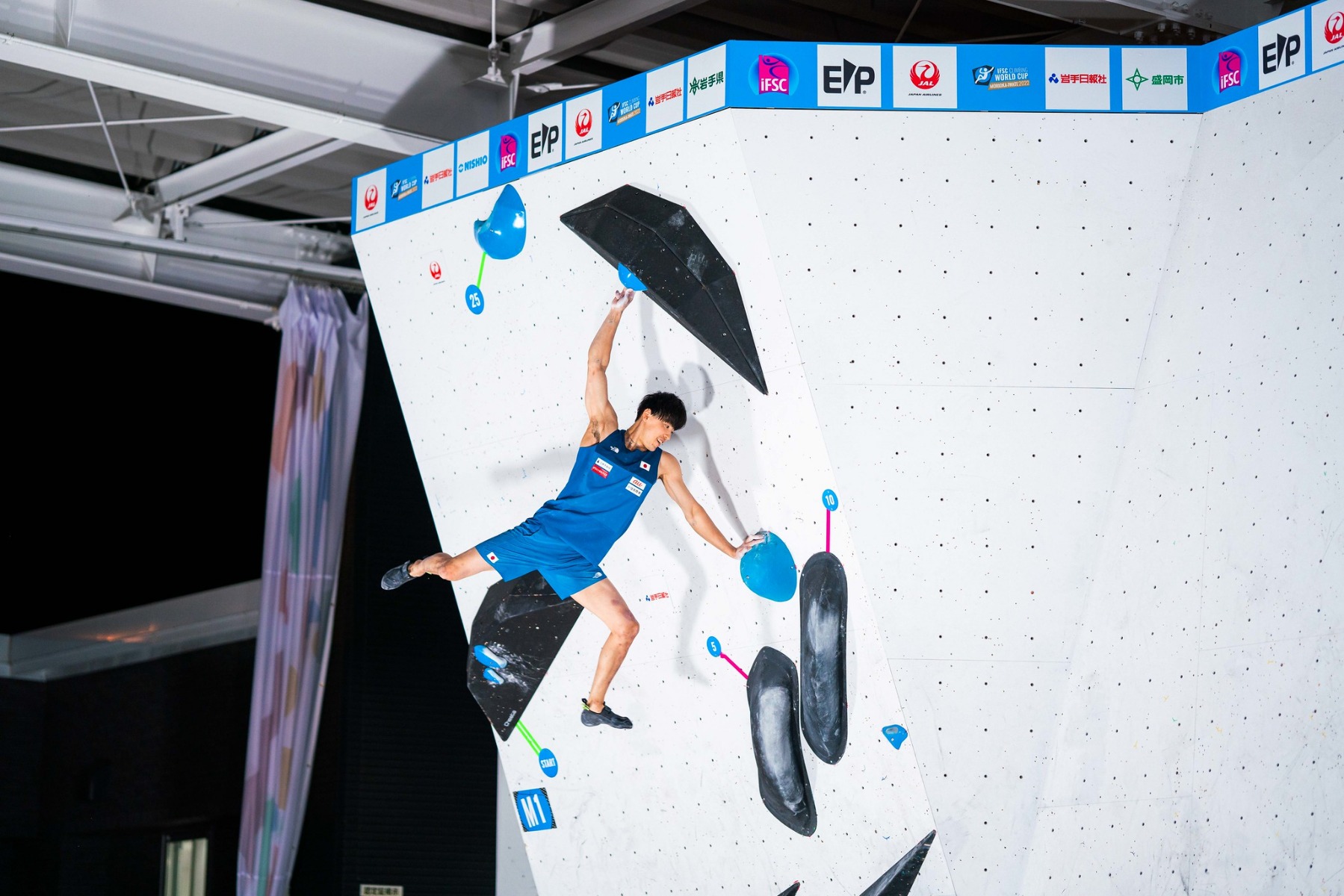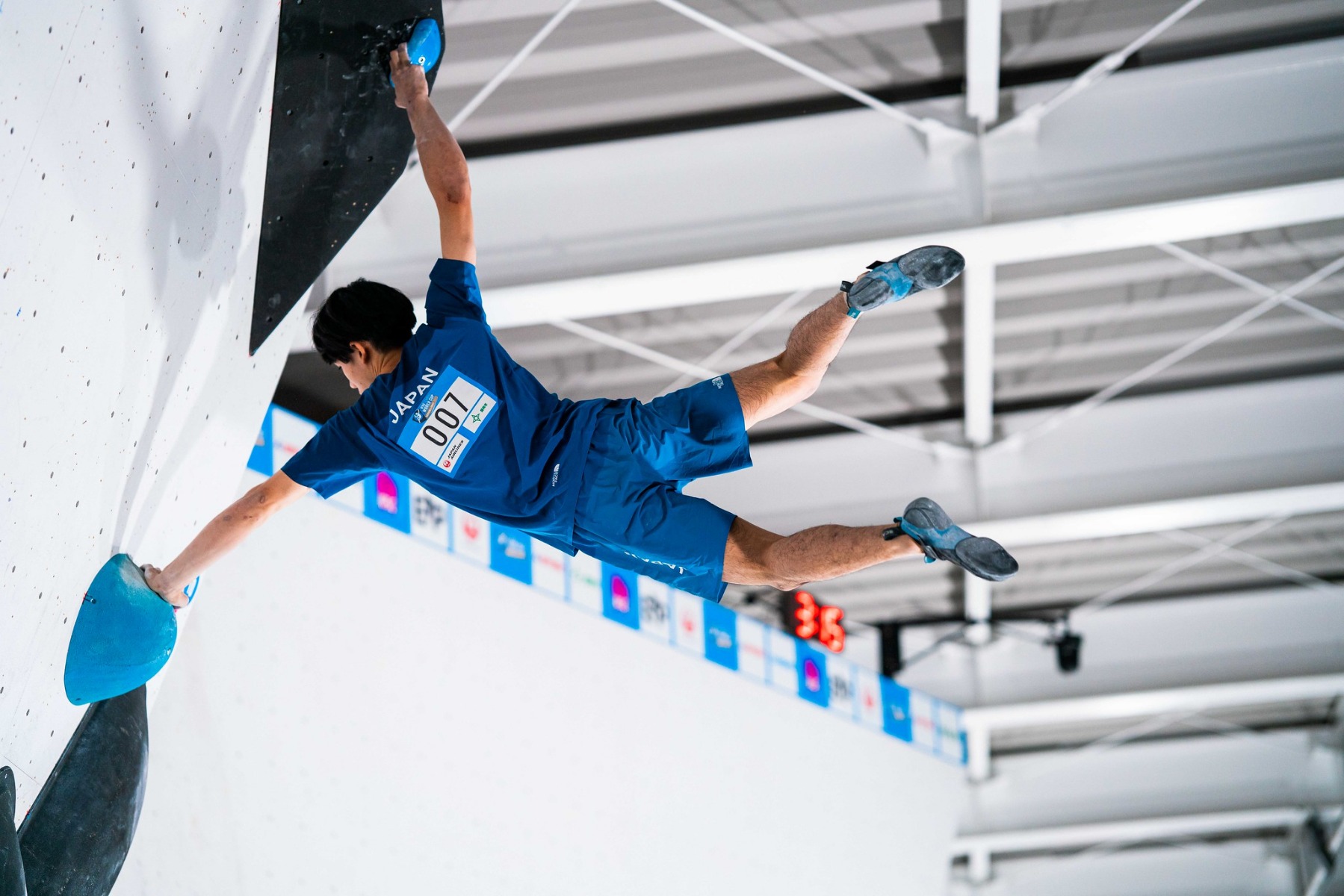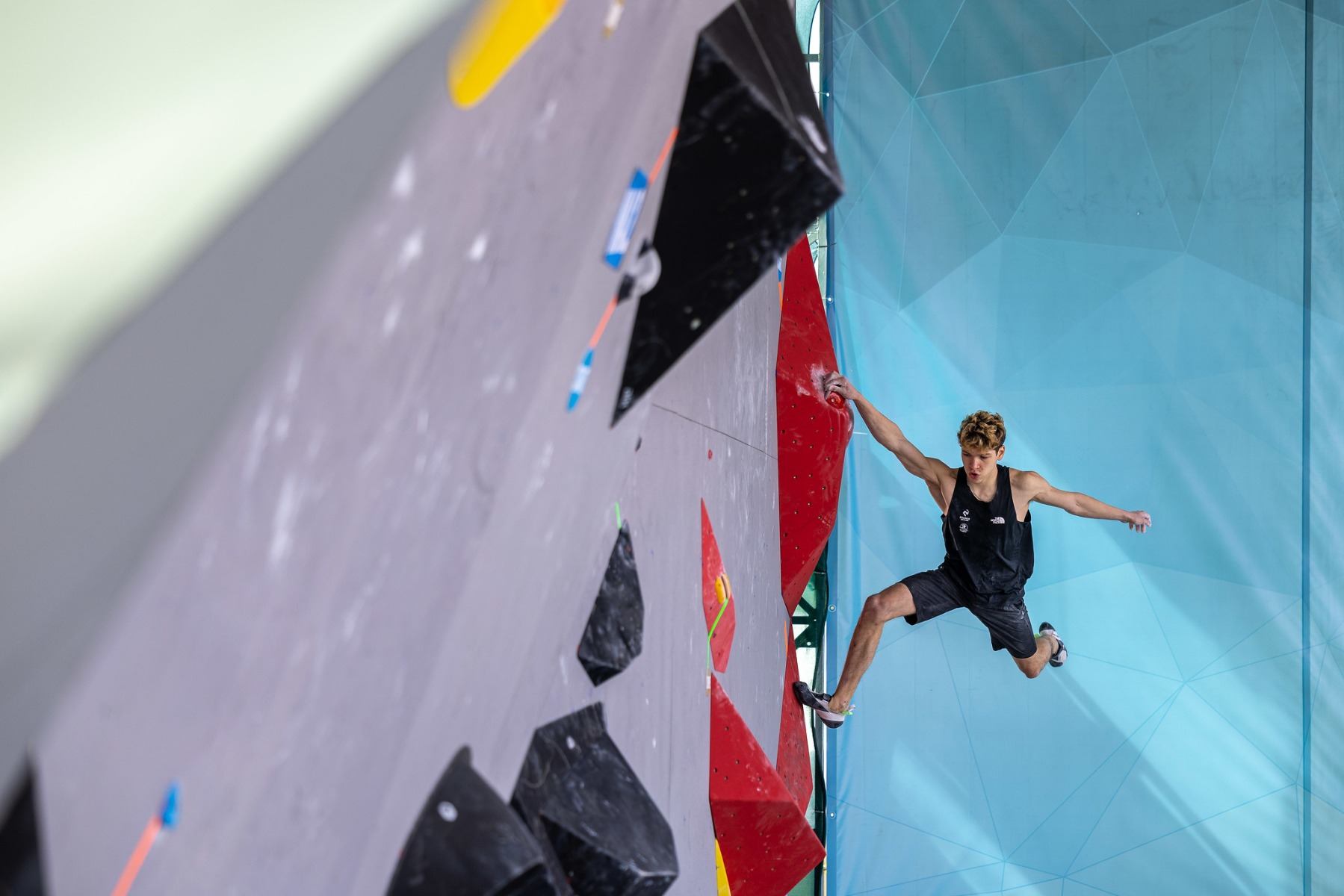One of the most debated topic of “nowadays climbing” is the new routesetting style, especially the one we use to see in bouldering competitions: sometimes people call it “parkour style”, some other times they just refer to it as “dynamic boulder with coordinative movements”. By the way it always leads to a lot of comments.
In these last months we have read a lot of different points of view about this climbing style: they deepen this question more than just saying “it doesn’t reflects real climbing” or “it is highly engaging, the two main comments we can hear about it. We have indeed read a lot about biomechanics, inshigts on extreme climbing movements performed by climbers who have different body physiologies and, of course, about its connection with its roots, that is rock climbing.

Evolution in route setting
But let’s step back to, more or less, the beginnings of 2000s, when bouldering gyms started to be almost everywhere, being a very useful place to train while the “off-season” of rock climbing forced the climbers to stay away from the rock. The real goal was therefore to be in shape for the rock, so the gym was just a tool to stay fit for climbng routes: for this reason climbers often trained on circuits to keep endurance at high levels and on hangboards to increase maximal force.
Despite this, many climbing gyms started to develop also boulders: they required less space to be set up and many climbers began to be aware about the efficiency of bouldering training. Boulders often crossed with circuits in the same wall that became full in colors, holds shapes and route setting tapes. The climbing style was univocal: holds far from each other, extreme lock-offs and brutal force in the fingers.
Sport climbing has been a “niche” sport until few years ago: it happened many times that during National Boulder Cup the number of the qualifying athletes was lower than the minimum number required for the Semi-finals: that meant that you automathically had access to the Semi-final round and the Qualification round was not even disputed (most of all in Female Category). A very fast and always increasing interest in this sport quickly led to a completey new climbing scene, to the rapid increase in the number of climbing gyms in every city and to a new need: to bring new people to discover this exciting world.

Bouldering with a new perspective: pure fun
With a large number of new climbers accessing the gyms, a new side of climbing is born: it is not only a way to keep trained during winter, but it has begun to establish itself with its own identity as a physical activity that can be done even only indoors.
It has conquered also a wide public among kids and youngsters, setting up a sort of “new generation” of climbers who like to play, have fun and enjoying themselves, other than training.
The engagement aspect
Together with this rapid expansion of indoor climbing, international competitions fulfilled an increasingly busy calendar, and they also brought the good and the bad of Live Broadcasting of the main stages. One of the organization’s target of these new competitions has been for sure a funnier and more interesting show: therefore creativity has soon become the number one ingredient for routesetters. But what has been firstly considered – as many news – just an awkward research of the strangest movement ever, it has then brought to deepen many aspects related to climbing movements and to focus on new metodologies of routesetting with the aim to increase difficulty.
Boulder World Cups have also uncovered a new challenge for routesetters: to set up boulders able to do a “properl ranking”, that is to say boulders set up with filters having the right amount of difficulty and targeted for cilimbers that are – in most cases – far stronger than the route-setters. The extreme level of athletes like Janja Garnbret, Jakob Schubert, Adam Ondra and Oriane Bertone – just to name a few – is at a difficulty range we almost have trouble even to imagine it. Trying sometihing new, exploring different possibilties with those huge holds and volumes we now have is the only way to create both an interesting show and high-level problems.

Evolution in terms of the materials used for the holds
Also the materials used to make holds and volumes has played its role in this recent change: light resins allow holds creators to shape new and bigger volumes, that once would have been impossible to be set up. Volumes naturally lead to experiment new movements such as run-up starts, jumps and what we call now “parkour-style” bouldering. Last but not least, a lot of climbing gyms have been so happy about these new “open hand” holds sets because they are considered less traumatic than edges and two-fingers pockets, that is to say they are safer for climbers.
We also have to say that the more classical route setting has not been totally replaced but has rather been progressively accompanied by this new bouldering set up style. We can now take advantage of a richer variety of bouldering styles in many climbng gyms.

So is modern routesetting useful for rock climbing?
After all these reflections and arguments, let’s get straight to the “real” question that everybody ask itself when wondering to try a “competion-style” boulder or not, being aware that he will not find such a problem on real rock. If considered in a wider context, where we train by often changing the climbing style and so swtiching from slabs to overhangs, holds to be crimped and and big volumes, we can be sure that new route setting style will make us more complete climbers.
Maybe we will not see those specific gains on the rock, but we will experience the benefist we’ll get in terms of coordination, explosive strength, proprioception and pushing force in our legs. A full skills pack that we have too long understimated.

To know more
If you want to go deeper in this topic, we leave you here some of the sources we have read in order to write this blog post, but you will find many other options around the web. At opposite ends we’ll find Parkour is not Climbing, End of the Story” on Climbing.com and Flatholds “World Cup climbers and setters exploring movements" video, both presenting interesting points of view.
all images by IFSC Media Gallery
